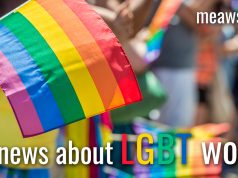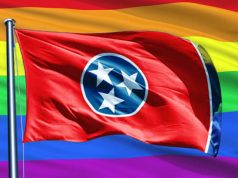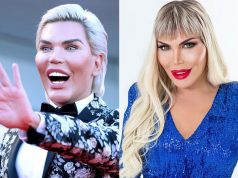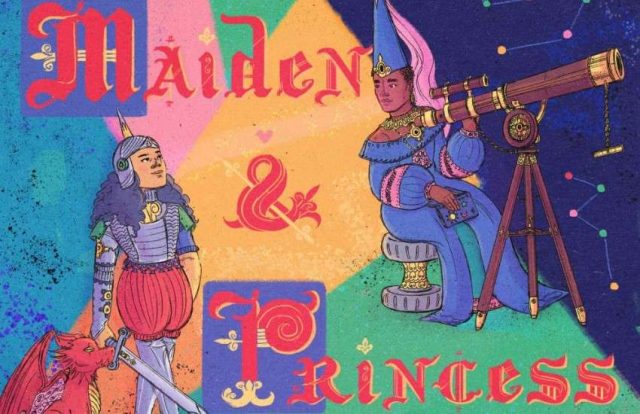
In the discussion of LGBTI representation, one area is often left out: children’s media and stories. Whether it’s due to the what’s ‘appropriate’ debate or a lack of titles, it’s a conversation worth having.
That’s precisely Isabel Galupo and Daniel Haack’s intention with their new illustrated children’s book Maiden and Princess.
A significant number of youth around the world – and more and more parents are .
‘It was important to us to write an uncomplicated love story for queer people to aspire to,’ Galupo tells GSN of the book’s significance.
The pair sought to buck traditional – and sexist – fairy tale tropes in their fantasy story.
I sat down with Galupo over coffee in Hollywood. We discussed her love of fairy tales, how to balance reality and escapism, and more in a broad-ranging conversation.
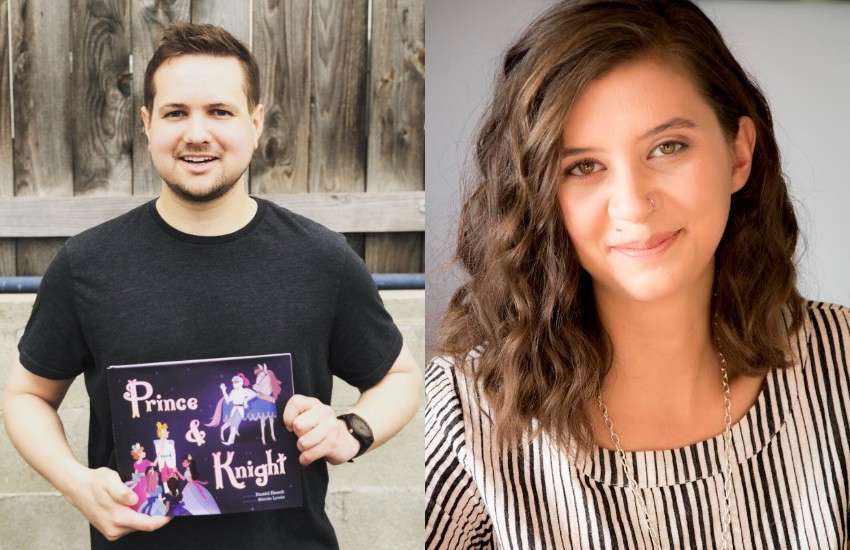
Daniel Haack and Isabel Galupo | Photo: Provided/Maya Washington
One of the book’s most astonishing aspects is that none of the common struggles seen in LGBTI stories are present. There’s no discrimination, bullying, or other tragedies that seem to define our stories.
Galupo, however, is quick to tell me Maiden and Princess isn’t entirely devoid of struggle.
‘There’s a little bit of hardship with the maiden and the pressure of being with the prince and heteronormativity,’ she explains. ‘The maiden has the internal struggle of not wanting to disappoint and feeling guilty about not wanting this [this being marrying the prince].’
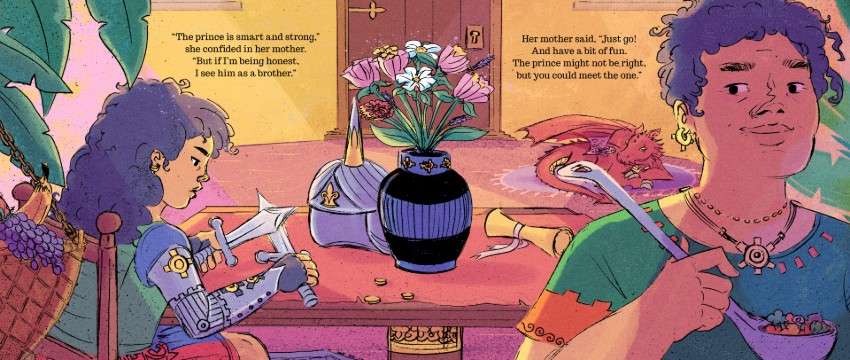
A scene in the book showing how the maiden sees the prince as a brother, but her mother encourages her that she could meet someone else | Photo: Provided
It’s a struggle based on Galupo’s own life.
She was raised by two moms and never worried about not being accepted. Instead, she internalized the worries about how society would view both her and her moms when she came out.
Still, the book has a happy ending with the maiden and princess getting married. That in and of itself, however, was a behind-the-scenes struggle.
‘Marriage is absolutely a product of our patriarchal society,’ Galupo acknowledges. ‘But I also can’t wait to get married. Both things are true.’
Galupo and Haack knew some people might not like their queer fairy tale ending in marriage. They insisted, however, this was the story they wanted to tell. And it’s only one story out of millions.
‘There are so many different types of stories to tell,’ she says, encouraging others to tell their own stories.
Just as with everyone else, LGBTI lives contain multitudes. They are full of hope, tragedy, success, love, grief. Though the LGBTI community isn’t defined by its tragedies and hardships, it’s also impossible – and irresponsible – to ignore our history.
‘When I think about who I want to be as a writer, I first want to be honest with myself so I can be honest with my readers,’ Galupo says of herself as a writer.
‘As a writer I want to be honest with the struggles I’ve had, with the hopes of making someone out there feel less lonely.’
She maintains, though, there’s a balance, and stories have an incredible power to inspire.
‘I do think queer writers and diverse writers have a responsibility to give hope – but it’s not real if you don’t get raw about the harder moments.’
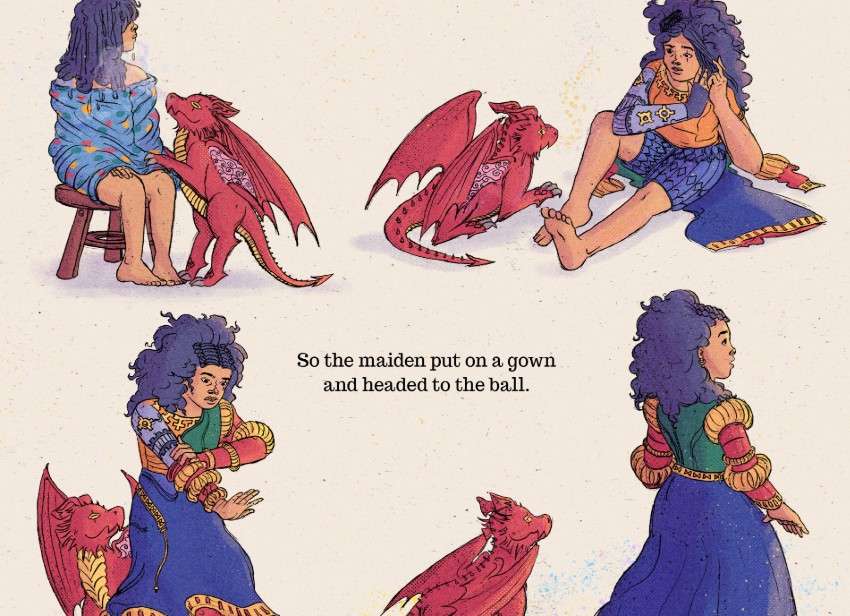
The Maiden has to perform heteronormativity, such as wearing a dress to a ball | Photo: Provided
It’s also about reflecting the reality of LGBTI people living in the world, Haack wrote in an emailed statement.
‘Kids are constantly exposed to heterosexual romances in the books they read and the movies and TV shows they watch, so by completely erasing LGTBQ representation, it’s really communicating that there’s something shameful about it,’ he said.
‘Kids are very smart and understanding, and talking about LGBTQ ideas with them isn’t some big, difficult conversation some adults think it might be. As we move into a more global society, we really need kids to be able to understand and celebrate both our similarities and our differences.’
Maiden and Princess came about after Haack’s first queer fairy tale children’s book, Prince and Knight, was published.
There was a big difference between the books, however: one focused on a male same-sex love story, the other on women.
‘As a gay guy, I’m certainly aware of the fact that there’s a historical trend in which underrepresented people aren’t often the ones who actually get to tell their own stories,’ Haack said.
Despite having queer women in his life, he acknowledged it’s not his ‘lived experience’.
That’s where Galupo came in, representing an authentic queer female voice.
‘It was great that he didn’t just go, “I’m going to assume I know the queer female experience,”’ she says of Haack’s invitation to co-author the new book.
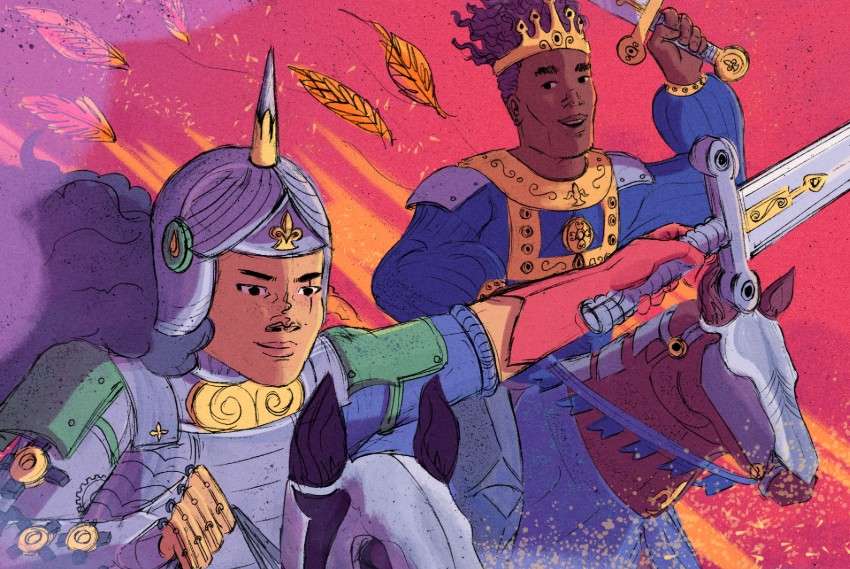
The Maiden and the prince, her friend who she has fought with in battle | Photo: Provided
It wasn’t the only case of having diverse voices behind-the-page to represent diversity on the page.
Becca Human is the book’s illustrator. Galupo reveals the only note they gave her was for the maiden and princess to be in an interracial relationship. This is another reflection of Galupo’s own life, who’s in an interracial relationship herself and also the product of one.
Everything else in the book’s design and its characters was all Human. This extended from the racial diversity to the varying body shapes.
Human is a black woman and to Galupo, ‘it shows how hiring people of all backgrounds for all positions brings diversity to the page and screen’.
Before wrapping up our conversation, sipping the remains of our sea salt caramel cold brews, Galupo shares a fun tidbit of the writing process with me.
She reveals one of the ‘best’ work emails regarding the book she ever received.
‘I’m a huge astrology person,’ she tells me gleefully. ‘Our editor emailed Daniel and I asking if we had given thought to the astrological sign to the two main characters.
‘They thought the maiden was a Taurus but weren’t sure about the princess. Someone threw out Aquarius and I immediately jumped in.’
She paused here to tell me the one piece of advice Haack gave her – identify with one of the lead characters.
Now back to astrology: ‘So I replied to the email that I felt very strongly that the princess is a Leo because she’s passionate and a romantic – and also I am a Leo,’ Galupo says.
‘And if you notice in the book, on the front and back pages, we have the Taurus and Leo signs.’
Maiden and Princess is .


